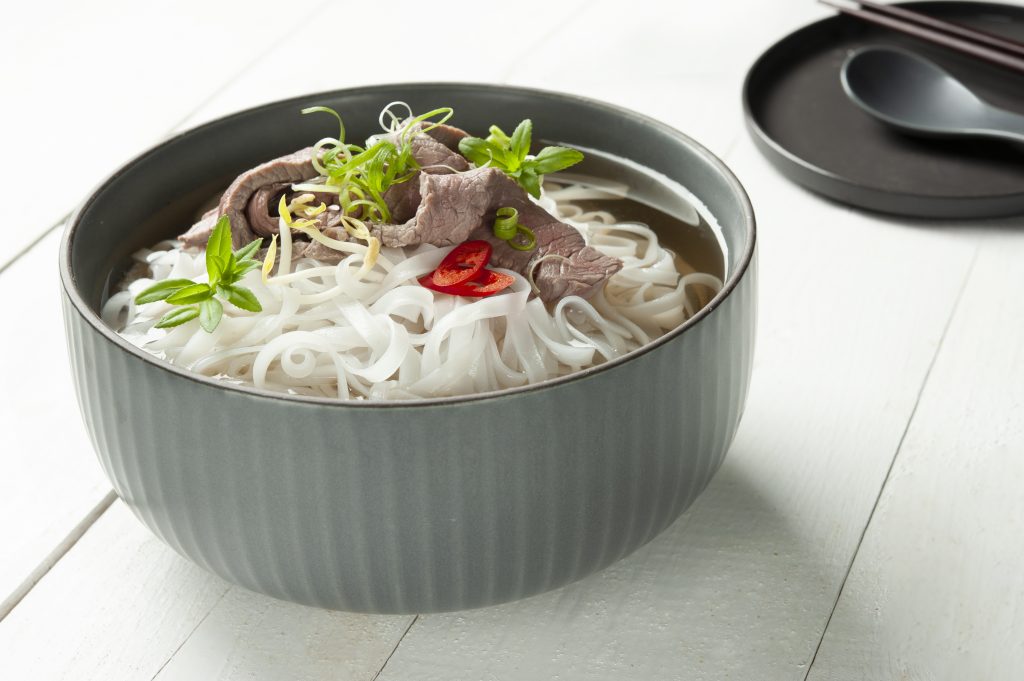Cooking rice noodles can be a breeze if you understand the proper technique. Many people make the mistake of cooking the noodles beforehand, resulting in a soggy mess. Here’s how to prevent that:
Soak, don’t boil, dried noodles:
Instead of boiling dried rice noodles, it’s best to soak them until fully rehydrated before stir-frying or using them in noodle soups. Rice noodles tend to overcook easily, and washing them evenly hydrates them without risking overcooking.
Here’s a general guide for soaking times (though it may vary by brand):
– Rice vermicelli: 5-15 minutes
– Small-size noodles: 20-30 minutes
– Medium-size noodles: 50-60 minutes
– Large-size noodles: 90 minutes to 2 hours
Note:
– XL-sized rice noodles are usually used as a substitute for fresh noodles. Soak them in hot water for 15 minutes, then drain and rinse with cold water. They will be partially cooked and ready to use.
– Testing for readiness: Lift them up to check if the noodles have soaked enough. They should drop and not resist gravity. If they still hold their shape, they need more soaking time.
Following these steps, you can ensure that your rice noodles remain firm, separate, and perfectly cooked without any sogginess, clumps, or breakage. Enjoy your delicious rice noodle dishes!

For stir-fries, add soaked noodles directly into the pan
When preparing stir-fries, simply add the soaked noodles directly to the pan. Once the noodles have been soaked, they are ready to be cooked in the pan. Generally, you’ll need some additional liquid, but the amount will vary based on factors such as the existing sauce consistency, pan congestion, heat level, and more.
To ensure the right amount of liquid for your dish, following a trusted recipe rather than improvising is recommended. If unsure, add less water, then taste and adjust as needed.
Push, flip, and toss. Don’t stir.
Employ pushing, flipping, and tossing techniques instead of stirring. Stirring can cause noodles to break, as the spatula can cut them into smaller pieces. This is especially true for delicate, freshly cooked rice noodles. Avoid using a spatula to haphazardly stir the noodles to avoid this. Instead, gently push them from the edges inward or use a flipping motion. You can refer to my video demonstration to observe this technique in action!
Use a wooden spatula.
Metal wok spatulas are like blades to these noodles; they can quickly chop your noodles without you realizing it!
Use a nonstick pan or a well-seasoned wok.
Whatever pan you choose, the surface should be nonstick because rice noodles, especially fresh ones, are notorious for sticking. And if you have to scrape them off, that’s one sure way to get broken noodles.
Take your rice noodle cooking skills to the next level by following Sa Giang! Stay updated with more useful tips and techniques for preparing delicious rice noodle dishes. Join us on our journey and unlock the secrets to perfecting your noodle game. Follow Sa Giang now for a culinary adventure you don’t want to miss!








